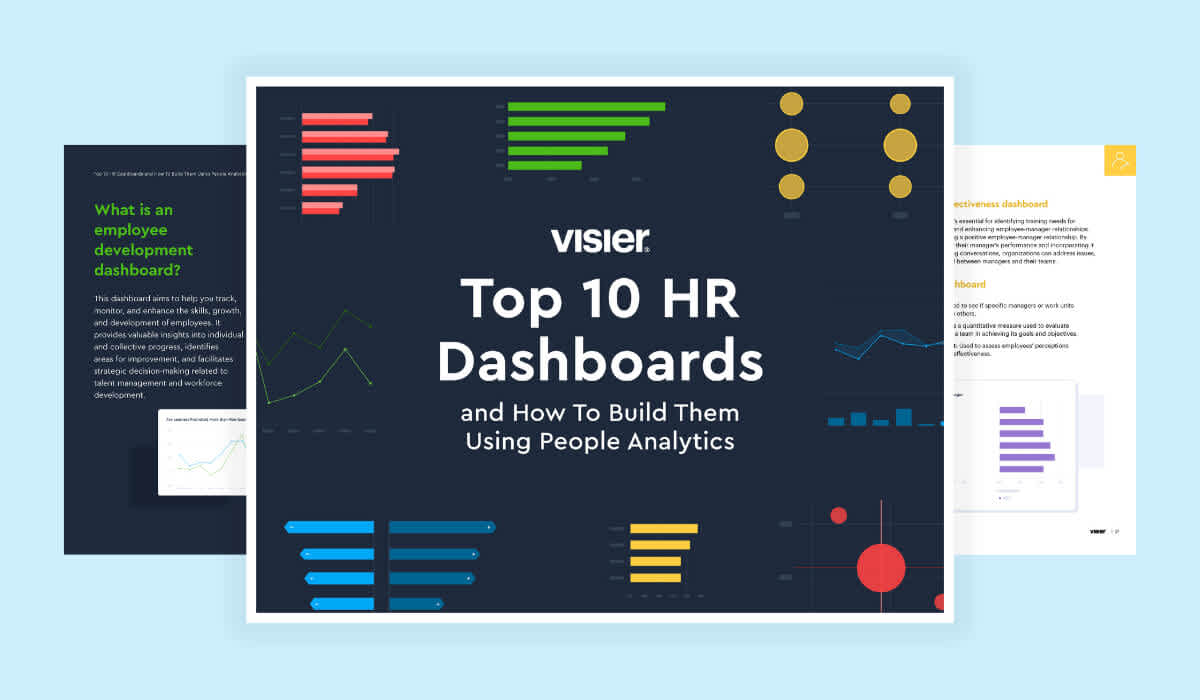10 Questions Vee Can Answer for Line Managers in Seconds
Visier's genAI assistant, Vee, answers questions from line managers quickly and accurately. Here are 10 real examples of answers from Vee.

This post is part of a series of questions to ask generative AI for people analytics. Explore other posts in the series to learn which questions AI can answer for workforce planning leaders, compensation and total rewards teams, HRBPs, people analytics leaders, and CHROs.
The role of frontline managers has changed dramatically over the past few years. From pandemic-driven changes in where work happens to the continuous evolution of how work gets done with emerging technologies like generative AI (GAI), managers are consistently asked to meet change head-on.
Line managers are expected to hire well, upskill, reskill, and develop employees, and lead their teams to achieve business goals—while also contributing to projects. McKinsey research found that less than 30% of managers’ time is spent on people leadership, with three quarters spent on individual execution or administrative tasks.
![[ANIMATED SHORT] Managers Questions to Ask](https://images.ctfassets.net/lbgy40h4xfb7/1o85kzcXWAMAxqTT9fjDn1/807d9b5560040f14b90a06bb25084e77/ask-vee-thumbnail.jpg?w=1200&h=700&fl=progressive&q=50&fm=jpg)
The impact is telling. A Gartner survey found that 77% of employees are placing increased importance on manager support, even though managers themselves have 51% more responsibilities than they can effectively handle.
Organizations are trying to address the need for manager development, but according to Gartner, only 25% of HR leaders polled are “confident their investments in manager development training are working.” Effective managers who develop and retain top talent through their ability to lead, motivate, and empower their teams directly impact productivity, profitability, and business success.
Line managers can use generative AI to automate tasks and access insights to make strategic decisions. We'll dive into this more below, and share 10 questions line managers can ask Visier’s generative AI assistant, Vee.

Generative AI helps line managers be effective leaders
AI can significantly help reduce the manual burden on managers by automating routine administrative and reporting tasks, giving managers more time to focus on projects, strategic thinking, and employee development. Line managers can use GAI tools to get real-time insights on employee performance, collaboration, skills, and much more.
Vee is designed for people analytics, delivering plain-language answers to everyday questions from line managers, CHROs, people analytics leaders, HRBPs, and anyone with the right permissions. Vee can handle some of the most pressing questions line managers have about their teams—answering complex questions that could take a human analyst days, weeks, or even months to discover. Vee can be incorporated into workflows that line managers already use in their day-to-day, like Microsoft Teams.
Next, we’ll offer 10 specific questions that managers can ask Vee—questions that can give them insights into people operations to help improve productivity, collaboration, retention, and more—and show real examples of how Vee would answer.
10 questions line managers can ask Vee
On any given day line managers are tasked with making critical decisions on the fly. Vee can deliver rapid responses in real-time during the course of a budget meeting, for instance, and then it will offer additional suggestions to drill down even deeper. Here are some examples of the types of questions that Vee can answer for line managers instantly:
1. Who is “employee name” interacting with the most?
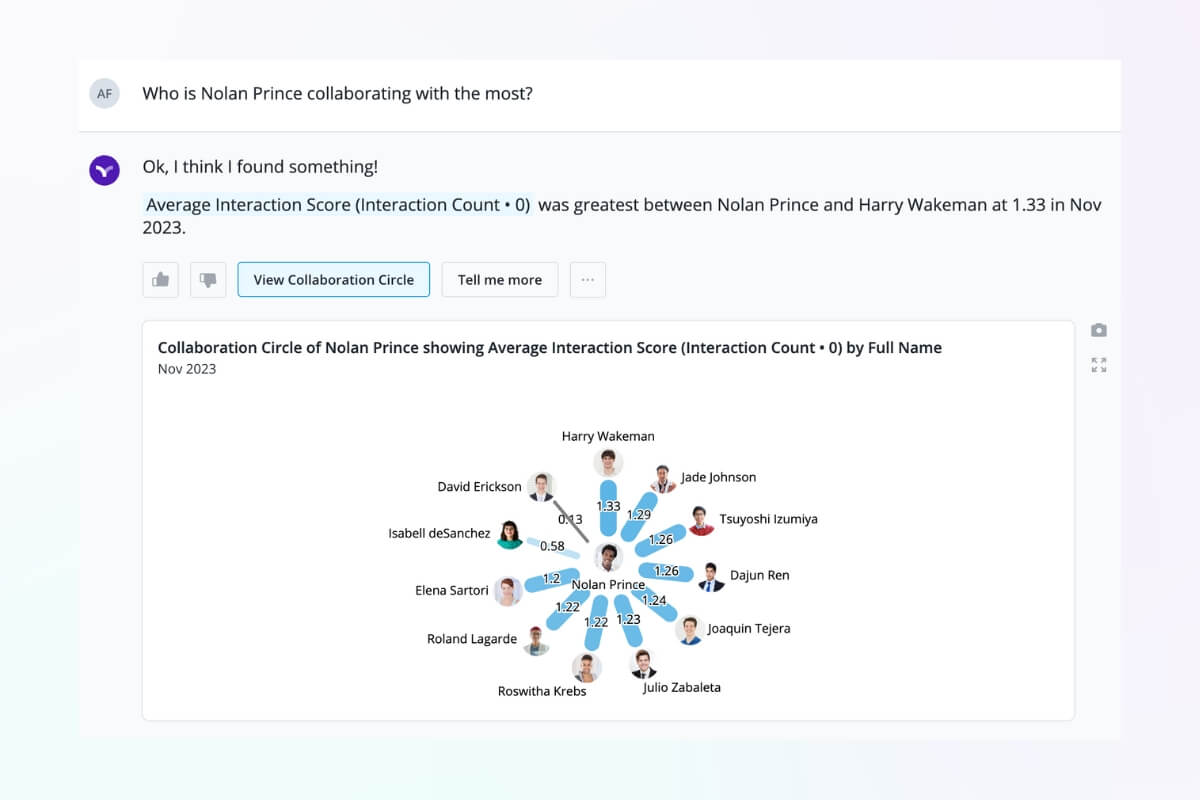
Understanding individual employees’ communication patterns can help line managers identify opportunities for better collaboration and identify any silos or areas where cross-functional collaboration isn’t taking place. This information can be used to help build strong relationships and even potential mentorship opportunities.
2. How does my team’s diversity compare to the company benchmarks?

Affinity bias is common, but proactive benchmarking can help mitigate it. A proactive focus on diversity will ensure that you’re leveraging the potential for new insights and innovation that diversity can bring. These insights can help inform targeted recruitment efforts, mentorship programs, and DEI efforts. Areas with greater diversity can serve as benchmarks and the source of best practices.
3. Which employees abandoned learning activities?

Identifying employees who have disengaged from learning opportunities can help you intervene early, understand root causes, and provide the support they need to get back on track. Armed with this information you’ll be better able to improve the overall skill development among your team members.
4. What’s the average time to productivity of my direct reports?

It can take time for a new employee—or an employee in a new role—to get up to speed. How much time, exactly? Vee can tell you. Armed with this information you can take steps to drive that time down through hiring, onboarding, coaching, and counseling new team members. Drilling down into the attributes of employees who reached peak productivity fastest can help you make better decisions to ensure that new team members are set up for success.
5. Which employees have worked overtime hours in the past two weeks?
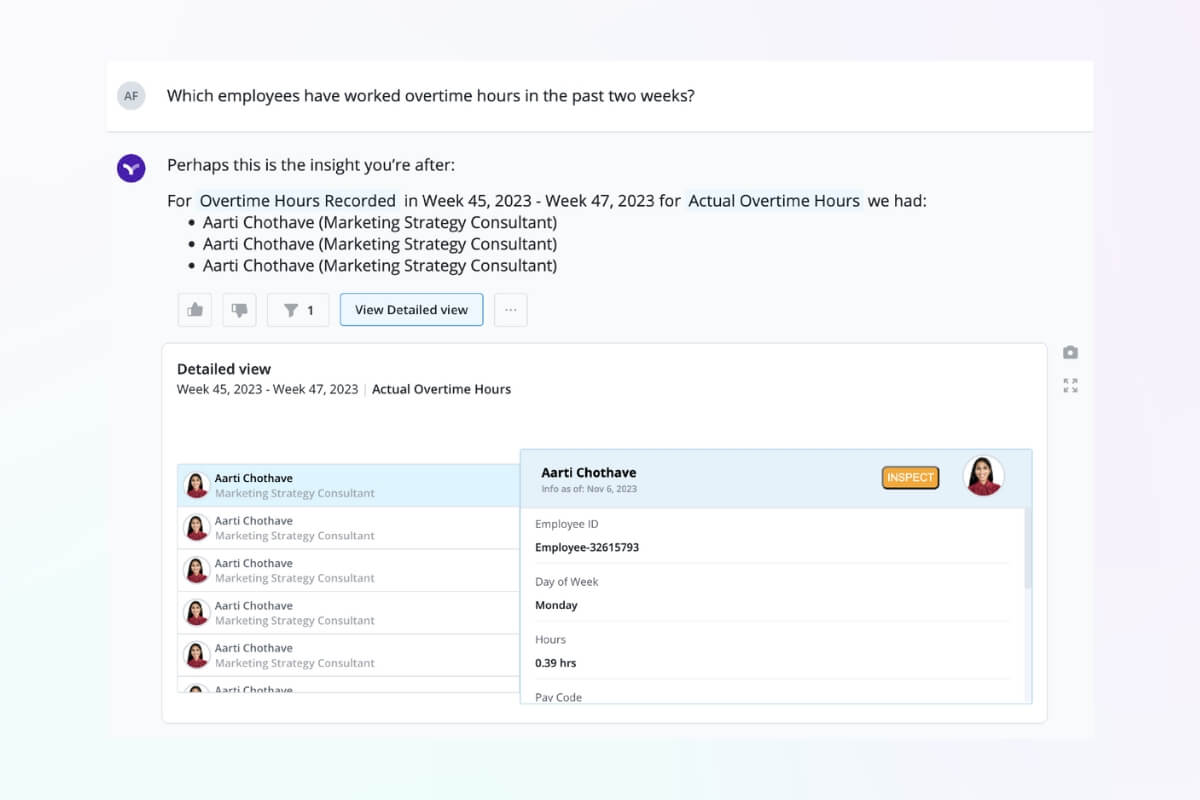
Monitoring overtime on an ongoing basis can help you spot potential burnout risks, work-life balance issues, and capacity challenges within your team. This information can help you have proactive conversations, redistribute workloads, and implement measures to promote healthier work habits.
6. How does my team’s resignation rate compare to company benchmarks?

Retention is a critical metric for every team. The cost of replacing talent is high, especially for highly-skilled and hard-to-fill positions. Benchmarking your team’s resignation rates against other areas in the organization can help you identify areas where you may be under- or over-performing. If underperforming, you can dig deeper to understand root causes and implement targeted intervention strategies.
7. Which employees are at the greatest risk of leaving in the next six months?
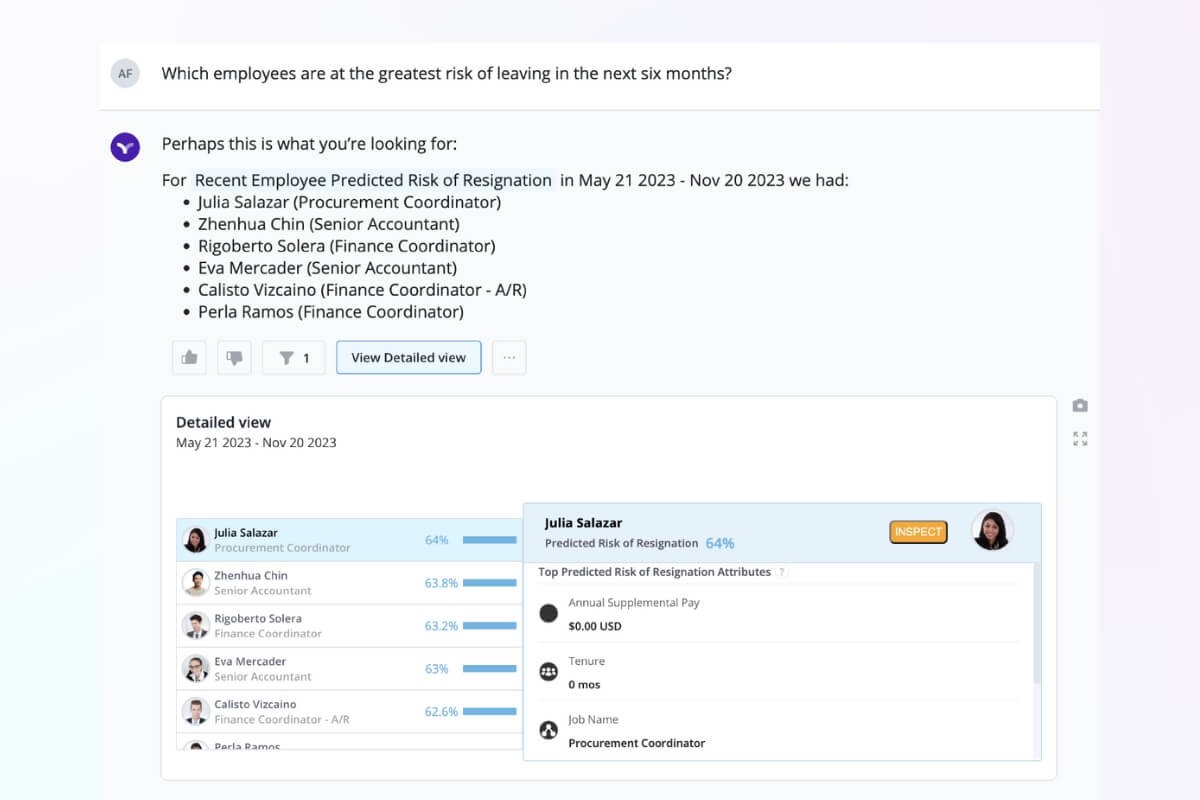
Heading off turnover can help you avoid the high costs and time commitments of finding and onboarding new talent. Identifying flight risks can point to areas of potential intervention and opportunities to connect with employees before they give their resignation notice. Monitoring this information over time can also help you expose patterns that may indicate opportunities for process improvements.
8. What is the top reason employees are leaving?

Employees leave their jobs for various reasons such as disenchantment with their managers, burnout, salary and benefit concerns, or simply the need to relocate for personal reasons. Understanding the top reasons that your employees are leaving can inform changes to policies, benefits, or your management approach.
9. What is the high performer ratio for my team compared to the organization?

Are your team members performing at a higher or lower level of performance than other teams in the organization? Applying benchmarks can help you compare team members to each other, and to other teams in the organization. This provides you with the necessary insights to make better decisions about talent management methods like employee development and strategies to retain high performers.
10. How does employee engagement impact employee productivity?
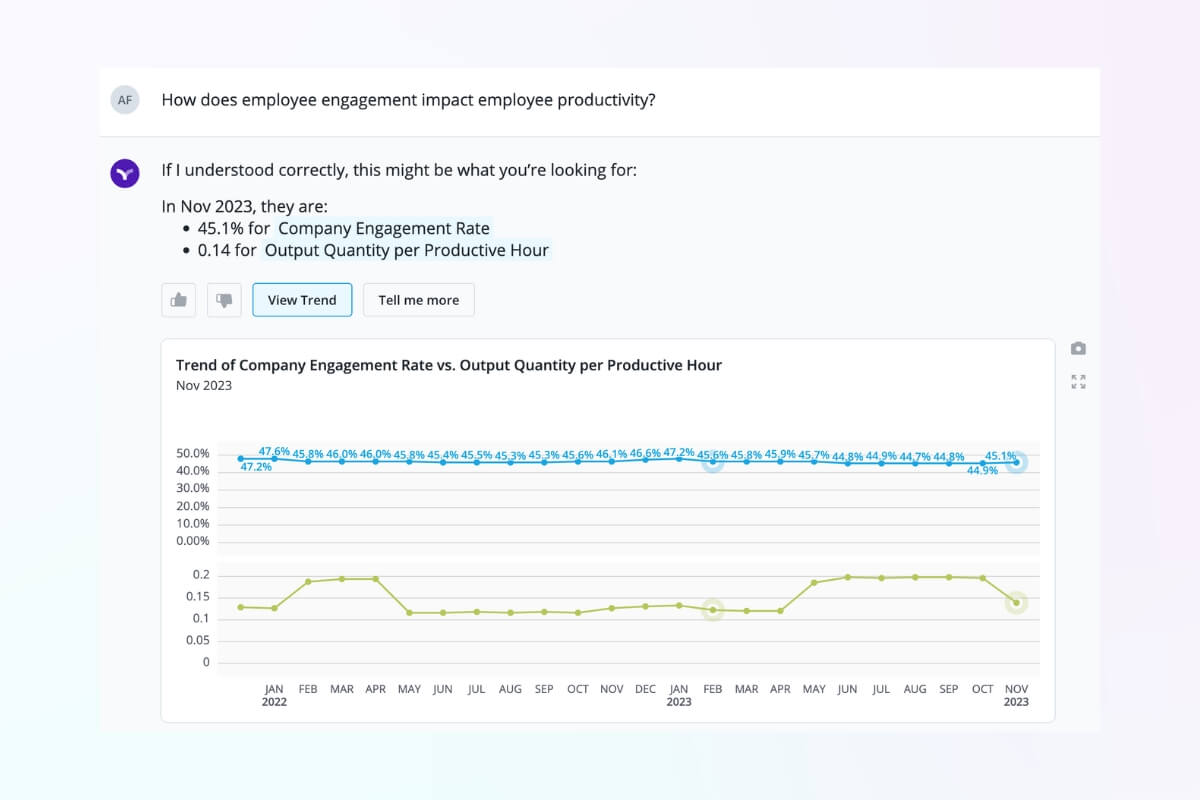
Employee engagement can create a better employee experience and even boost productivity. But, is that true among your team members? When you explore the relationship between employee engagement and productivity over time, you can make informed investments in employee experience initiatives and prioritize things like flexibility and work/life balance.
How can Vee help line managers better lead their teams?
Generative AI can transform and enhance your HR and people analytics processes. With accurate data and clear, concise questions, you can gain deeper data-driven insights into the most important aspects of better managing your team.
Vee is a digital assistant with no learning curve that can answer all your people- and team-related questions. It has a user-friendly interface and simplifies access to the data so that even those with little knowledge of AI and analytics can start using it immediately.
Privacy and security are built-in, which means you can carry on your work without worrying about any of those issues.
When used correctly, generative AI can help you create a more solid workforce and improve things like retention, productivity, and engagement. It can boost your diversity efforts and help you focus on what you can do best—creating a better employee experience for your team to drive the achievement of critical business goals.
Generative AI for people analytics and HR
Vee, Visier’s generative AI digital assistant delivers fast, intuitive, accessible workforce insights to people leaders. Learn the latest product updates here.
To keep up with the future of work, HR leaders need a strategy that's agile, adaptable, and rooted in data. GenAI can help close the gap between people data and business data. Ian Cook and Robert Sullivan share how.
Vee answers people analytics leader's questions about the workforce in seconds. Here are 10 real examples of answers from Vee.
Generative AI innovations like digital assistants are changing the way we work, and pose significant security challenges. Are they secure enough to use with people data?
As the use of AI continues to evolve, it's critical to comply with AI regulations like the EU AI Act and the U.S. AI Bill of Rights. But where do you start?



